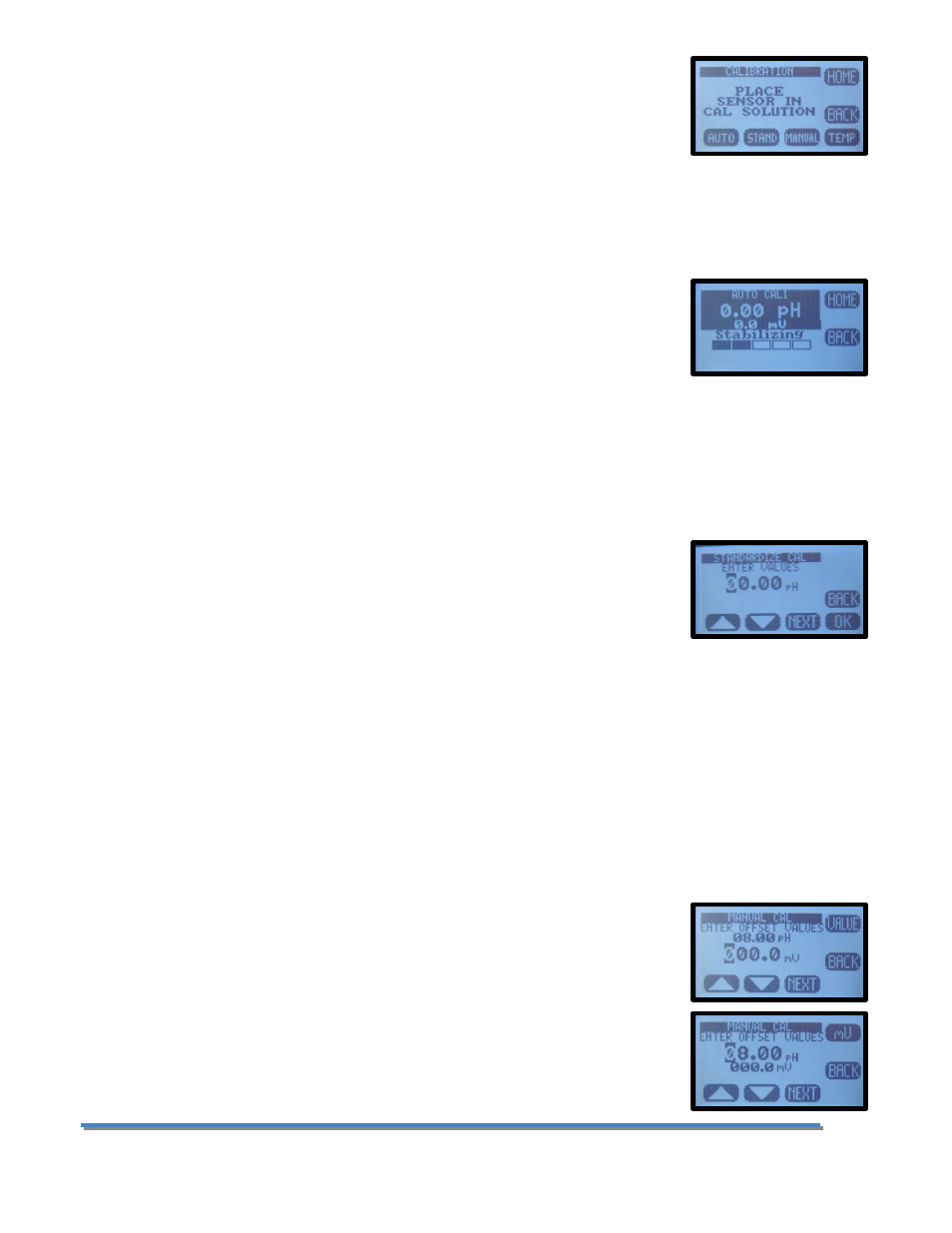0 calibration, 1 auto calibration description, 2 standardize calibration description – Electro-Chemical Devices (ECD) T80 User Manual
Page 32: 3 manual calibration description, Calibration

4.0
CALIBRATION
The Model T80 transmitter provides three methods of calibration:
4.0.1
AUTO
C
ALIBRATION DESCRIPTION
Auto calibration is the primary calibration method for all measurements. AUTO calibration automatically
recognizes the calibration solution the sensor is in and proposes the actual temperature compensated value for
acceptance. AUTO calibration can be a single point or two point calibration. A single point calibration sets the
zero point or offset value of the sensor. The second calibration sets the slope or span of the sensor.
When the AUTO key is pressed the transmitter displays the PV (Process Variable)
and the associated mV signal from the sensor. When the reading has stabilized a
calibration value is AUTOmatically proposed, i.e. 7.00 pH, 10 ppm Fluoride ion, 0.00
mg/L Dissolved Oxygen. The user is prompted to accept the proposed calibration
value or enter and accept another value. Once Cal 1 is accepted the user is ask to
continue to Cal 2, yes/no. If yes, then a second calibration value is proposed when the sensor has stabilized in
the second calibration solution. Accept the value and the calibration is complete.
At the end of each calibration the Offset and Slope are displayed in the respective units, pH, mV, ppm, mg/l.
4.0.2
STAND
ARDIZE
C
ALIBRATION DESCRIPTION
A Standardize Calibration is a single point calibration where the transmitter’s
reading is adjusted to agree with a solution of known value, either a calibration
standard, a grab sample or laboratory determined value. In many cases the
constituents and the pressure and temperature of the process solution are very
different from the calibration solution. In these cases, once the sensor has
equilibrated, the Zero Point or Offset value may have shifted from the original calibration point. Standardization
allows for correction of this type of offset.
When the STAND key is pressed, the user is prompted to ENTER VALUE. The user enters the value they want the
transmitter to read and press OK. The user is then prompted to accept the value, yes/no, and the calibration is
complete. Standardizations are single point calibrations.
At the end of each calibration the Offset and Slope are displayed in the respective units, pH, mV, ppm, mg/l.
4.0.3
MANUAL
C
ALIBRATION DESCRIPTION
Manual calibration allows the user to enter calibration data for an electrode into the transmitter without
performing a calibration. A MANUAL Calibration requires the entry of three pieces of
data, (1) A concentration with the (2) corresponding mV value and (3) a slope for
the electrode. This allows laboratory generated calibration data for an electrode to
be entered in a remote analyzer where calibration is difficult or impractical.
Example: MANUAL Calibration for a pH electrode
1. Calibrate the pH electrode in the laboratory
2. Record the mV value of some pH Standard, pH 7.00 buffer = 6.8 mV (any pH
– mV pair will work)
Page 31
Model T80
